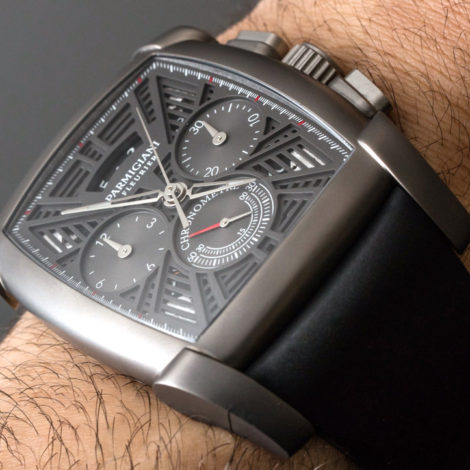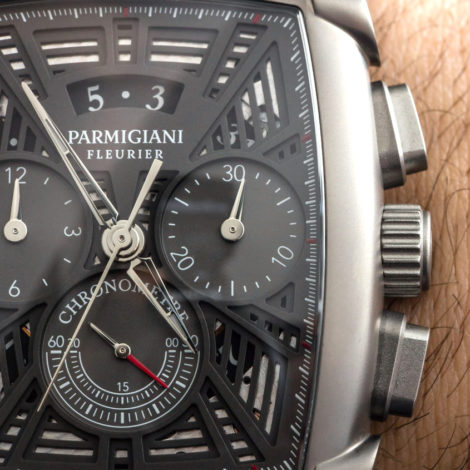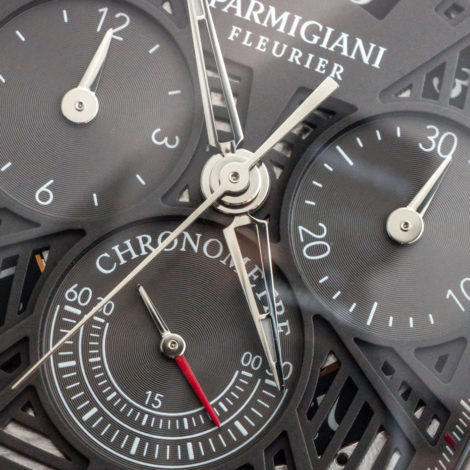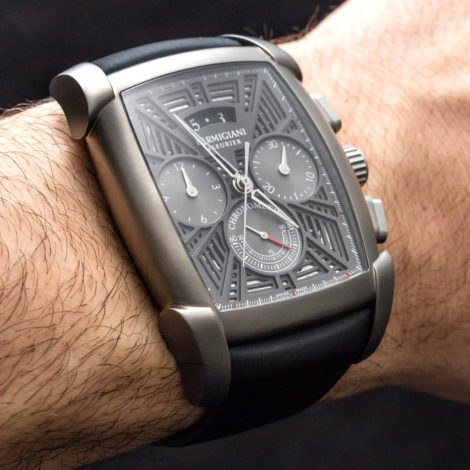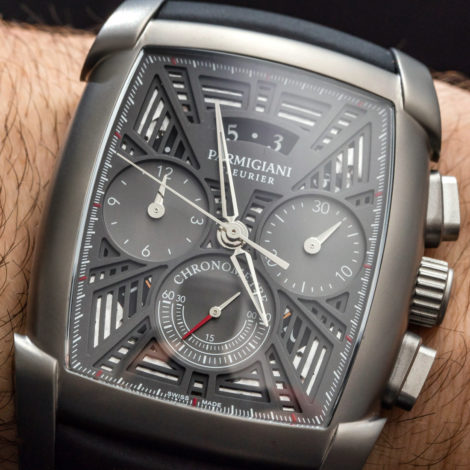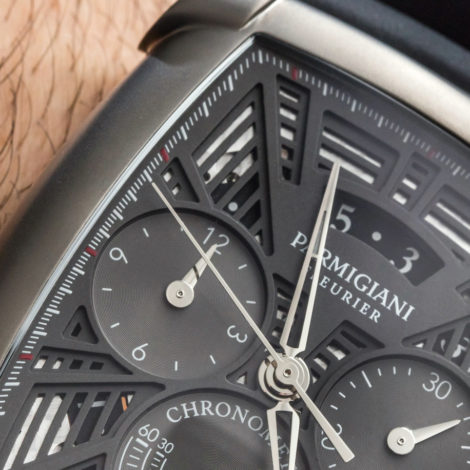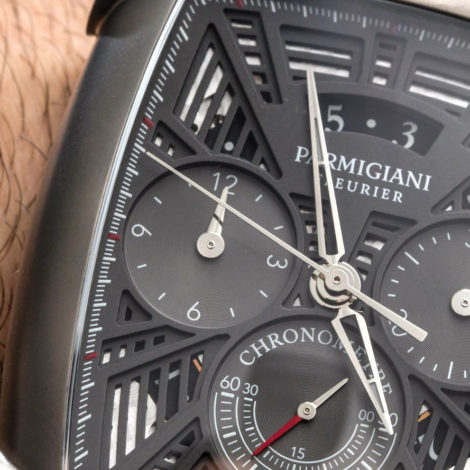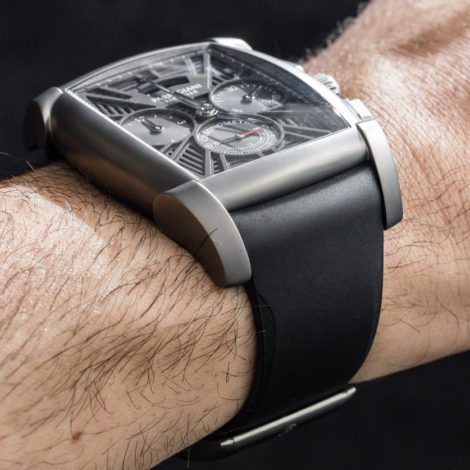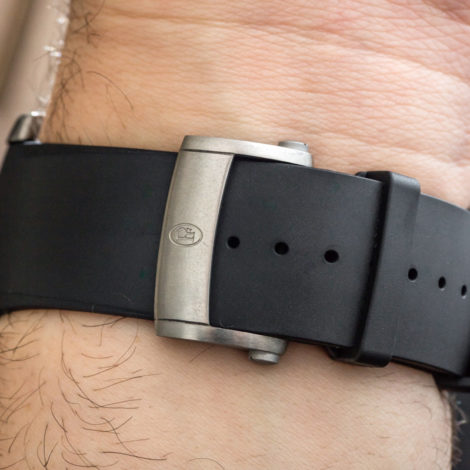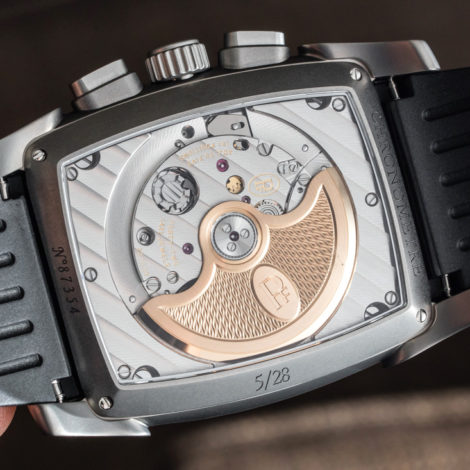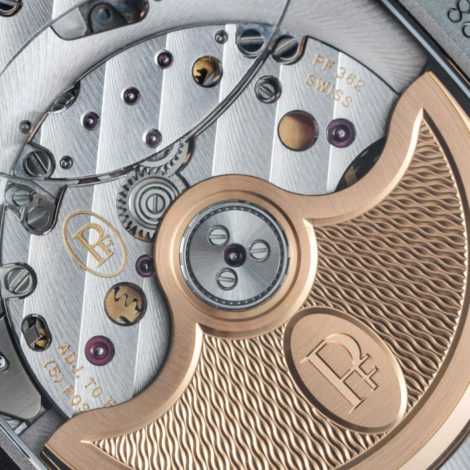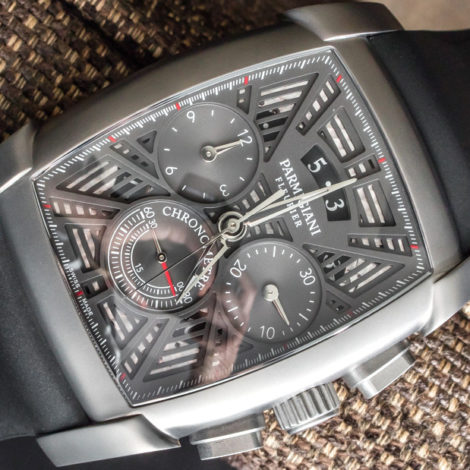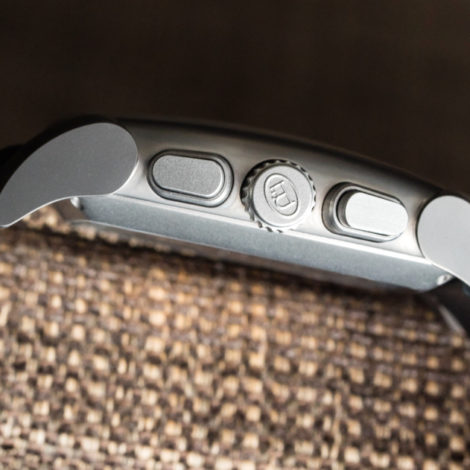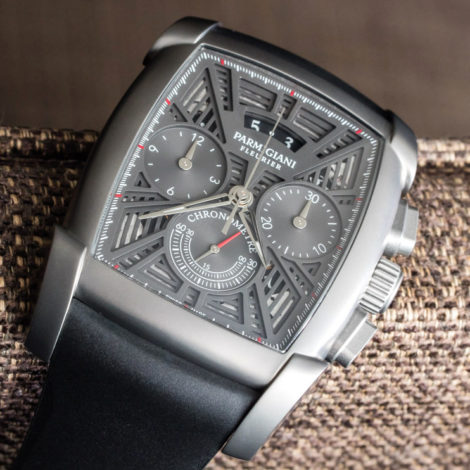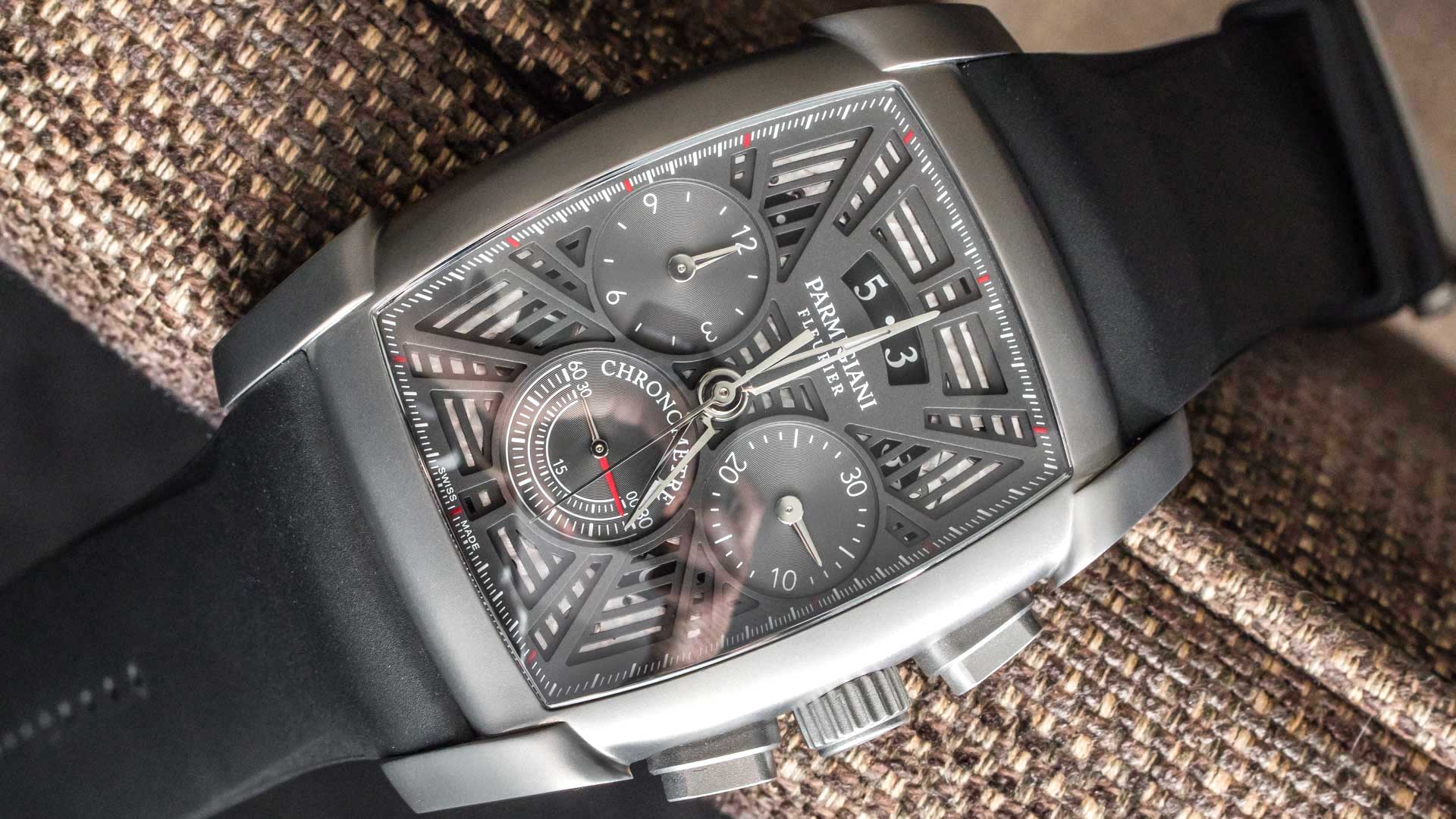
The most talked about new Parmigiani watch at SIHH 2019 was this new ref. PFC193-3040200-X01442 Kalpagraphe Chronomètre in titanium with an interesting open-worked dial. Sporty and distinctive-looking, this new high-budget sports chronograph celebrates the quirky visual styling of the large Kalpagraphe case and includes an exciting in-house-made integrated chronograph 5Hz automatic movement. It is all part of Parmigiani’s logical push both for “everyday” in-house-made complications, as well as part of the brand’s refocus on the Kalpa collection, which has yet to hit its stride with a male demographic to the West.
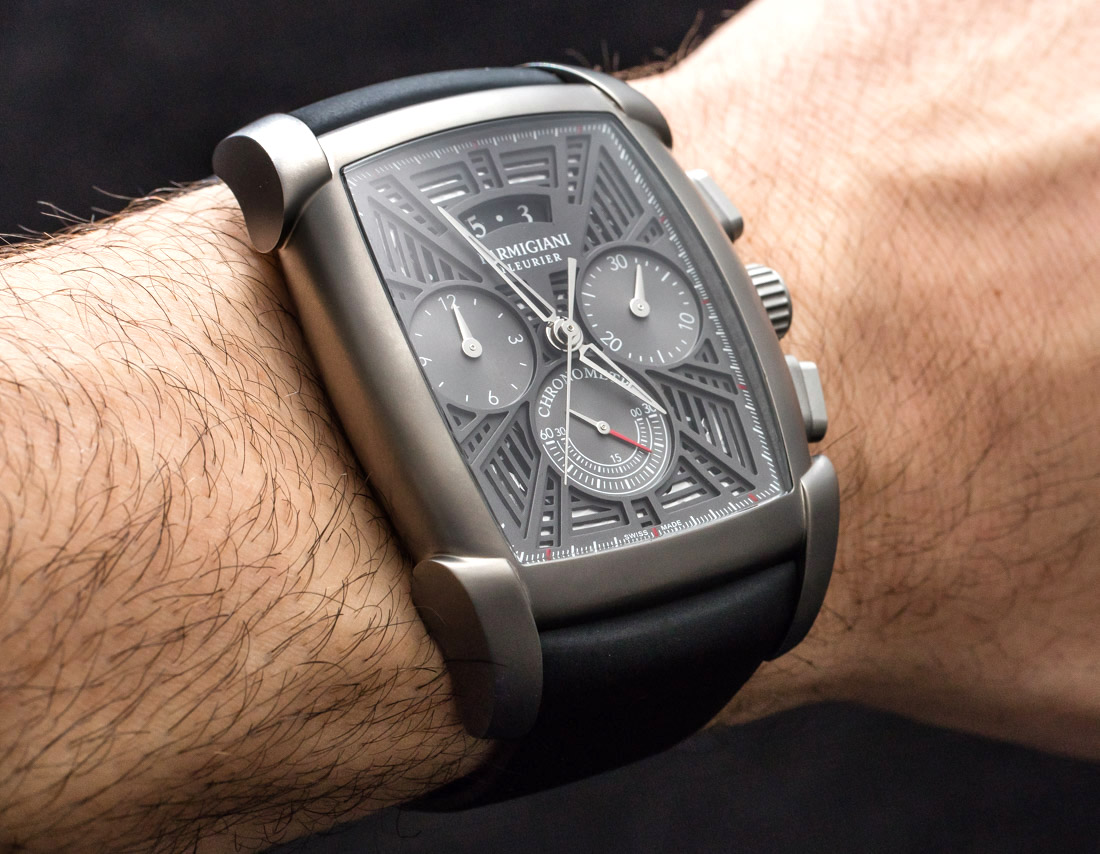
The Kalpa is Parmigiani’s take on the tonneau-shaped case complete with the brand’s signature “teardrop-style” lugs. In truth, Parmigiani has tended to do better with Kalpa collection models for women, given how the shape sizes down and fits on a bracelet. For men, the Kalpagraph is handsome and stately, but best suited for larger wrists that can take the 40.9mm-wide by 48.2mm-tall case. Numerically, it doesn’t seem that large, but the case wears sizeably. That said, in titanium, the Kalpagraphe Chronomètre feels lightweight to hold and is not a burden to wear. That is especially true compared to last year’s 2018 Parmigiani Kalpagraphe Chronomètre in 18k gold (aBlogtoWatch hands-on here). Oddly enough, the titanium version of the Kalpagraphe Chronomètre costs about $5,000 more than the ref. PFC193-1002500-XA1442 18k rose-gold version. Other than the different dial, which appears a bit more complex to produce, I can’t account for why titanium costs more than gold when normally the reverse is true.
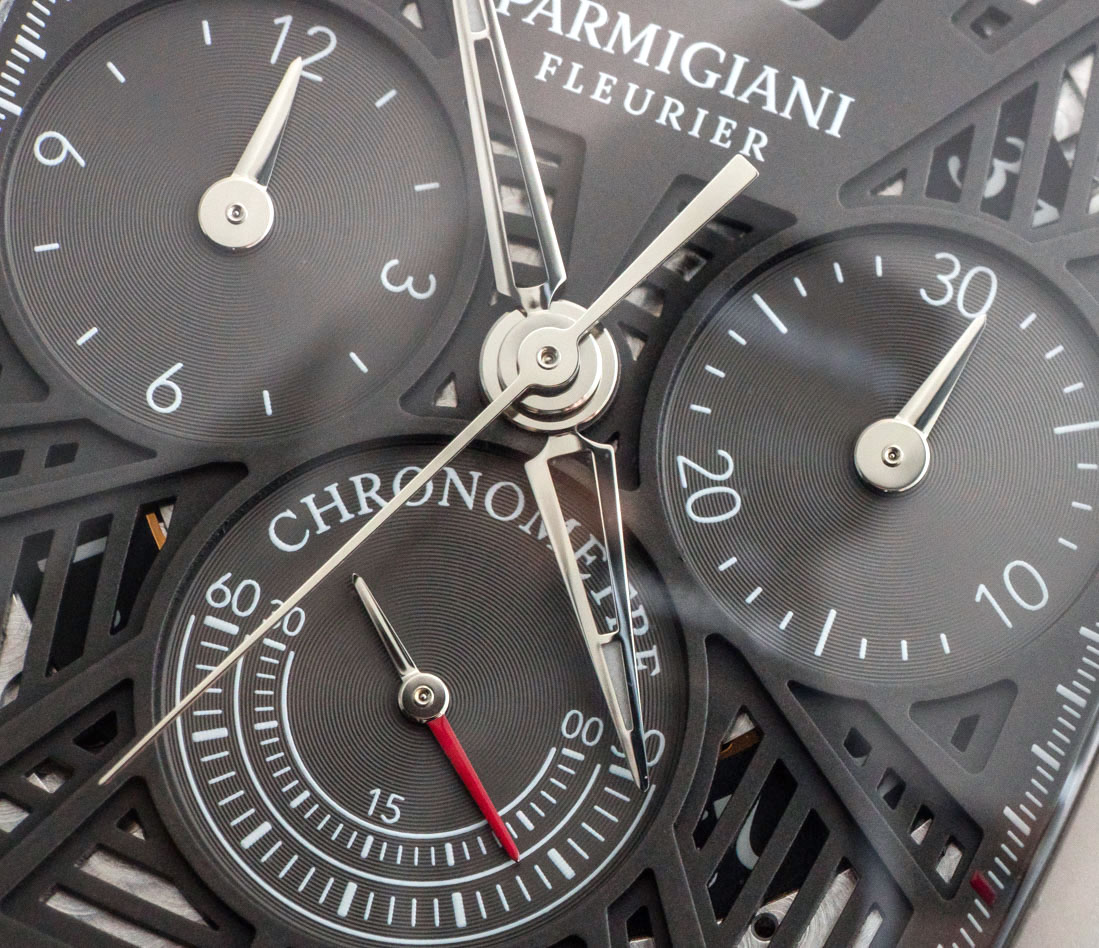
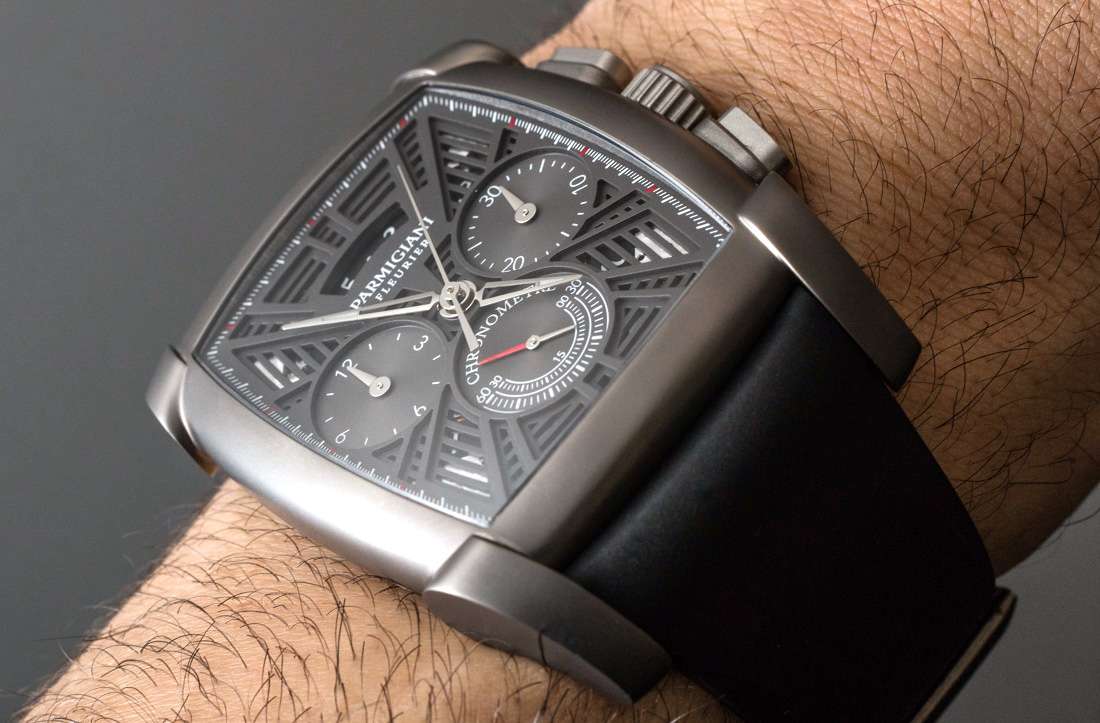
Parmigiani uses grade 5 titanium for the Kalpagraphe Chronomètre case along with a satinized finishing that offers a sporty, industrial look. This is probably the least expensive finishing available for titanium as compared to a polished finish, based upon my understanding. Not that the finishing isn’t good-looking or tasteful, but I am still trying to determine the reasons for differing prices of the Kalpagraphe Chronomètre models. The case is water resistant to 30 meters and has a sapphire crystal caseback, which makes for a good view of the movement. Adding to the sporty appeal of the timepiece is a comfortable black rubber strap — which is something you don’t see very commonly on today’s Parmigiani timepieces.
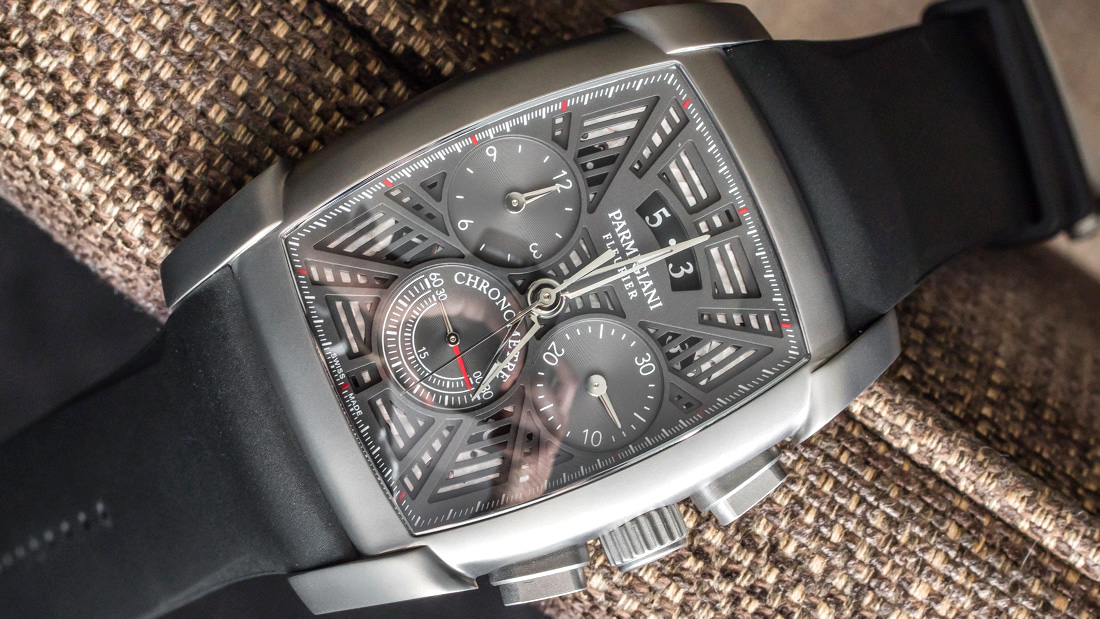
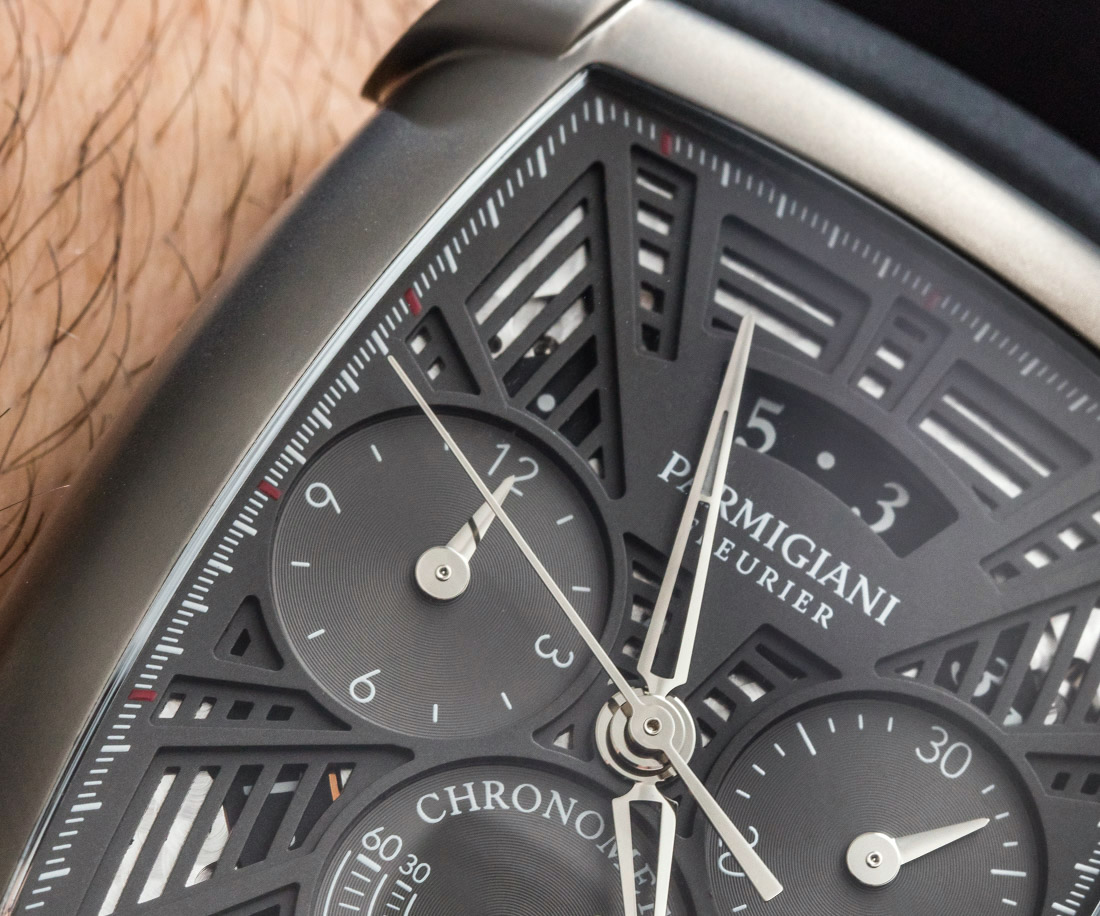
Clearly, a lot of effort was put into the dial of the titanium Kalpagraphe Chronomètre, and it does have an inspired yet elegant look to it. One issue, however, is Parmigiani’s insistence on using polished hands, which have a tendency to blend in with the dial a bit, negatively effecting legibility. With all the matte finishing on the watch, it feels like a missed opportunity to use hands that don’t ideally match the needs of the dial. What makes things a bit worse is Parmigiani’s decision to skeletonize the hands — despite them leaving the smallest level of luminant possible still applied to the tips. I haven’t tested the watch in the dark, but I have seen similar watches that use only token levels of luminant. In practice, I am guessing you can consider the watch not to even have luminant. Recall for a moment that the 18k rose-gold version of the Kalpagraphe Chronomètre has non-skeletonized hands, and legibility is great.
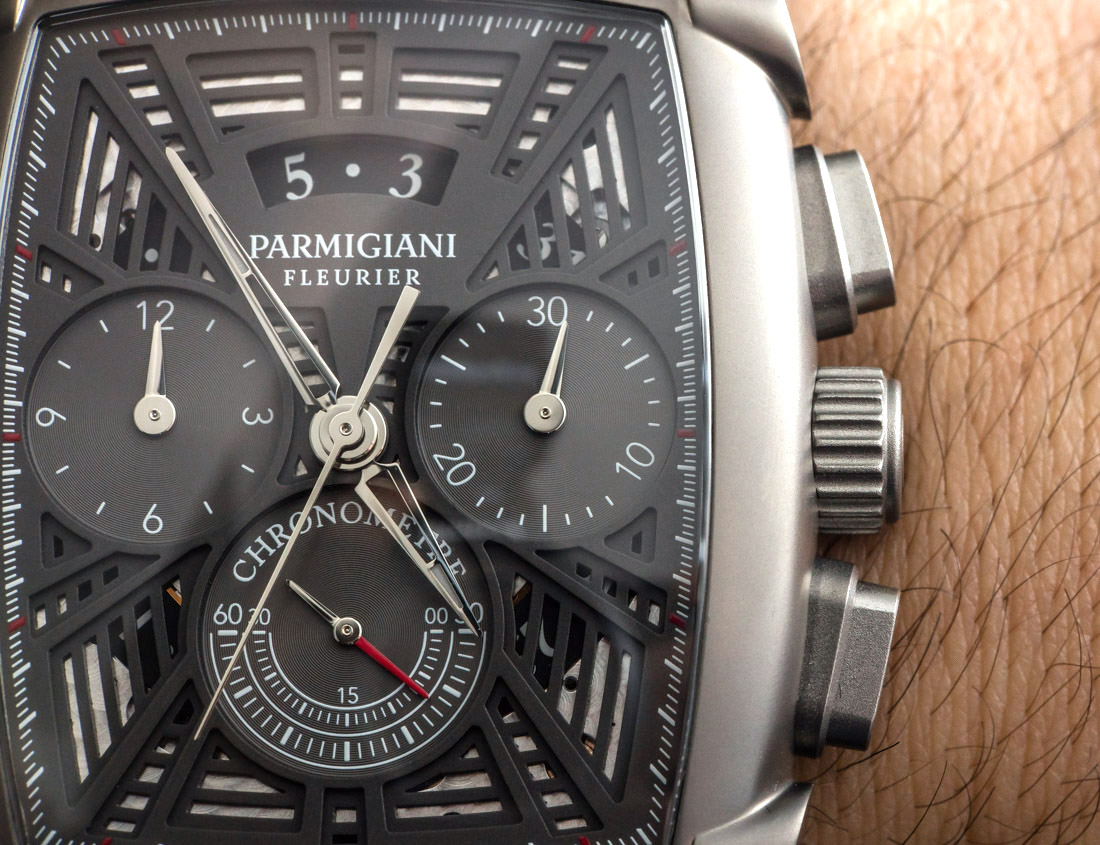
I understand that Parmigiani wanted to complete the skeletonized theme of the dial by also skeletonizing the hands, but this is an instance of form over function. I’m sure this design made a lot of sense when a designer was coming up with it on a computer screen, but I do wonder who approves hands like this, which should have either been totally full of luminant or skeletonized in some more clever way to promote a lot of legibility.
That said, given the skeletonization inherent in the dial design, legibility in other areas — such as the open date window under 12 o’clock, as well as the subdials — are pretty easy to read. The subsidiary seconds dial is one of the quirky ones that uses a two-sided hand and an indicator scale on just half the full dial (with the rest leaving room for “Chronomètre).”
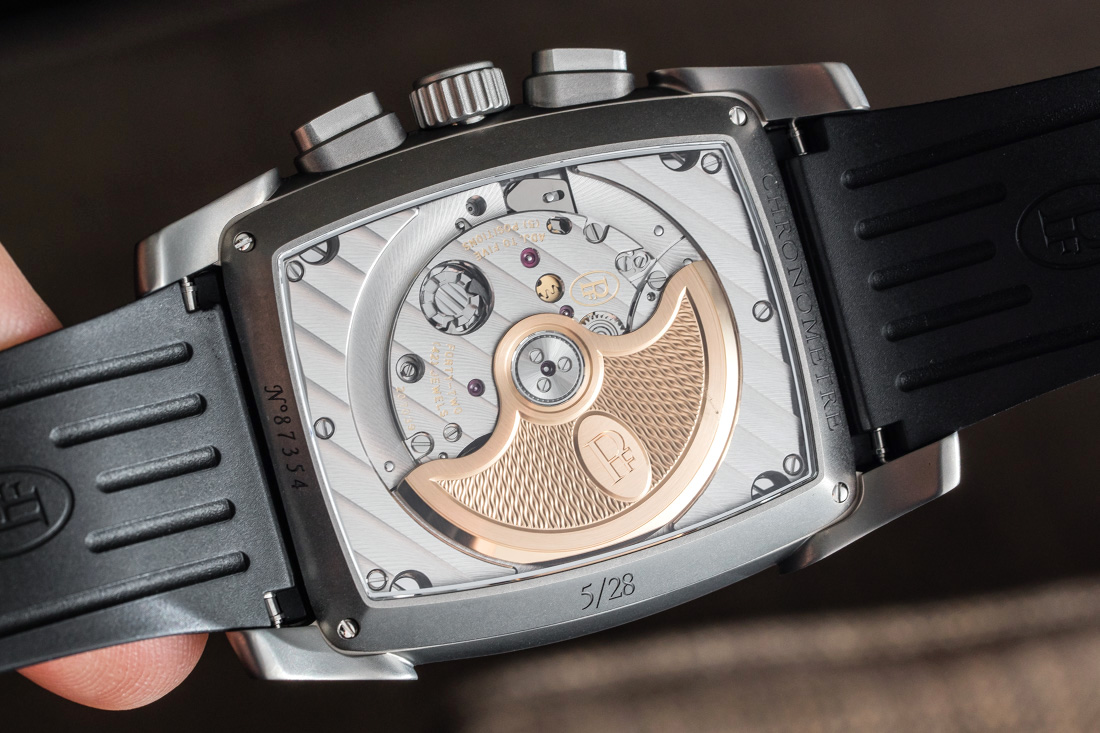
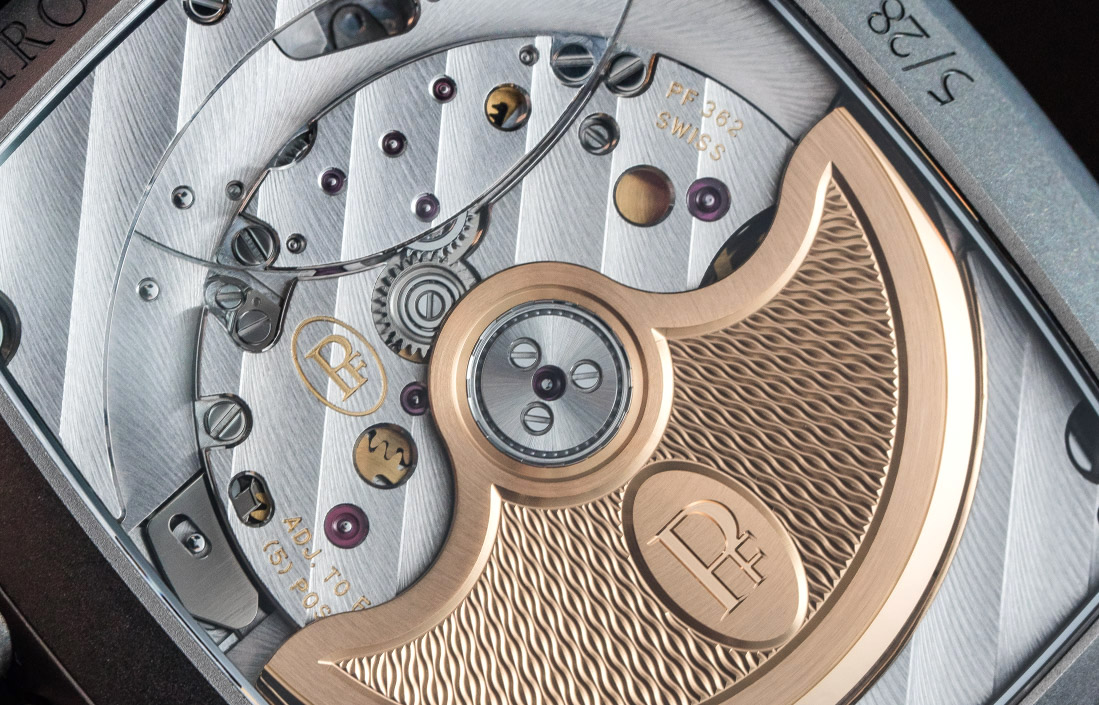
The best part of the Parmigiani Kalpagraphe Chronometre is the in-house-made Parmigiani caliber PF362 movement. This is Parmigiani’s answer to the Zenith El Primero, but in more haute horlogerie form with lots of beautiful decoration. The movement begins with a shape intentionally designed to match the Kalpa’s tonneau-shaped case — something that also makes it distinctive. Comprised of 332 parts, the PR362 automatic movement is just 7mm-thick with a power reserve of 65 hours and an operating frequency of 5Hz. It is hard not to love the black-colored gold rotor that is decorated with machine engraving.
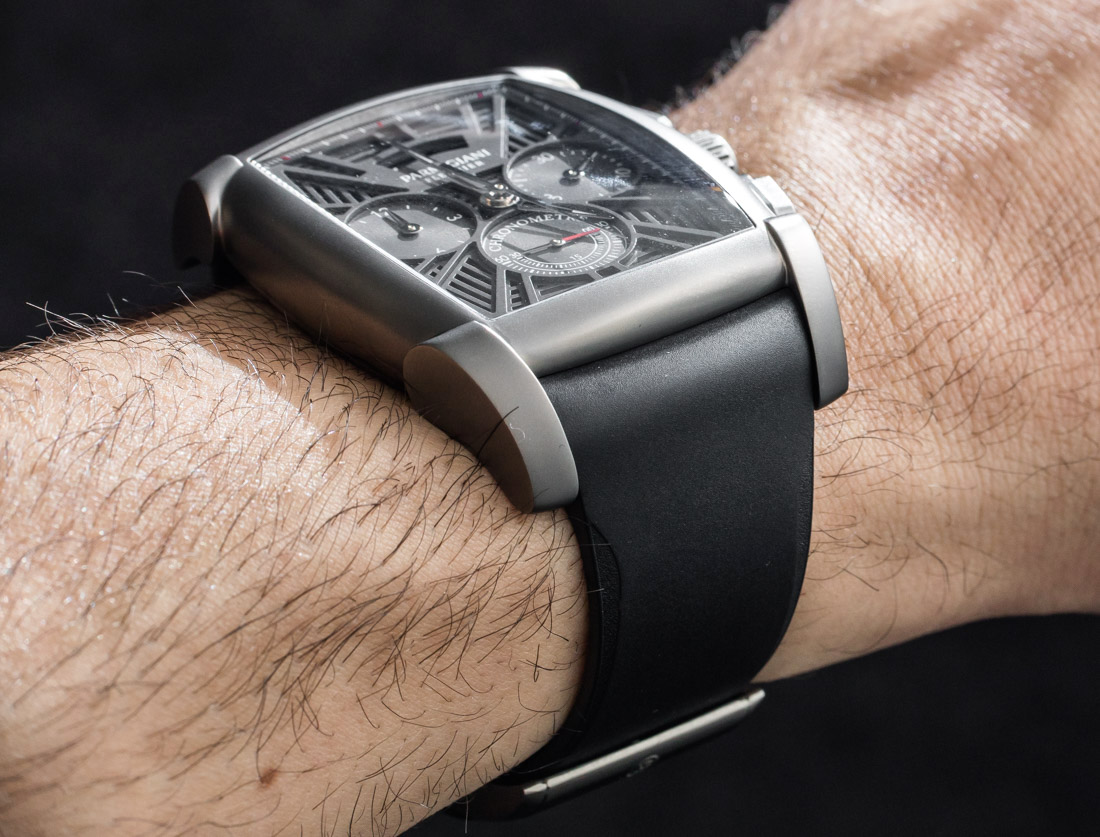
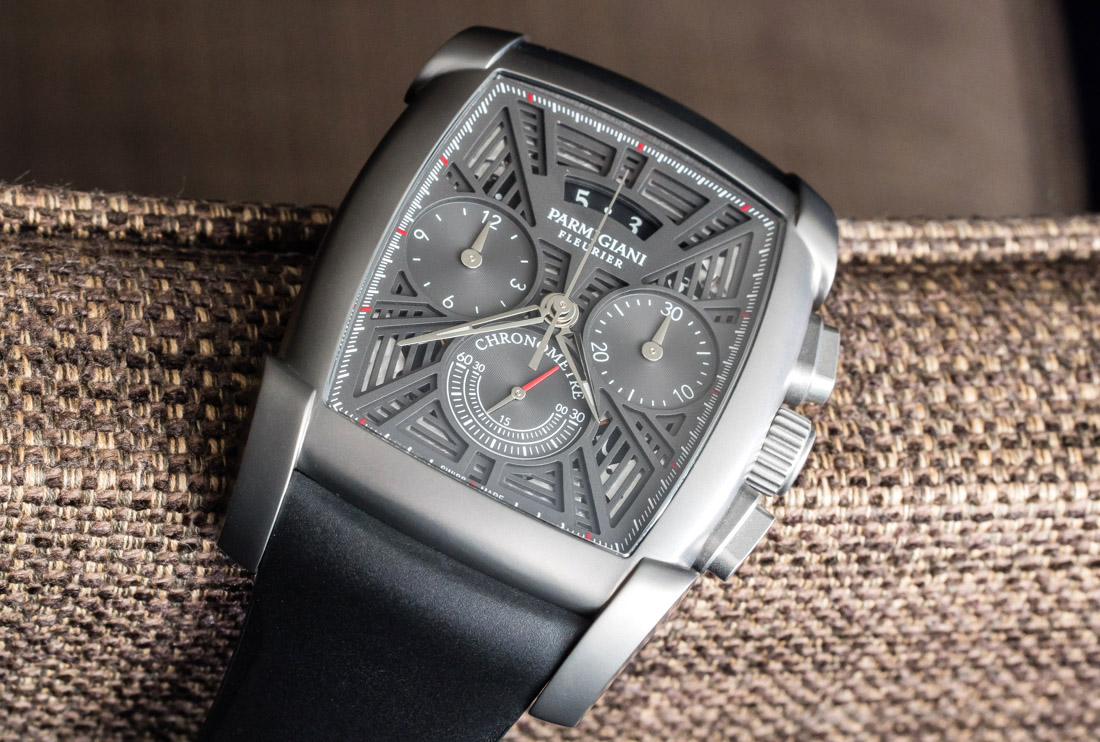
At this writing, Parmigiani’s most popular watch product in the United States is the Kalpagraphe Chronomètre. It’s a stellar timepiece, and Parmigiani clearly hopes that it can keep up momentum with difference versions of the Kalpa with its still-novel PF362 movement. The titanium model has enormous character and a solid sporty appeal. Ergonomically, it isn’t perfect, but it does offer some serious respite from all the “common” watch names and shapes that people tend to purchase again and again at this price level. Price for this Parmigiani Kalpagraphe Chronomètre in titanium ref. PFC193-3040200-X01442 is 39,500 Swiss Francs. Learn more at the Parmigiani website here.

